From humble origins, iconic painter left an impressive array of works, covering many fields, Lin Qi reports.
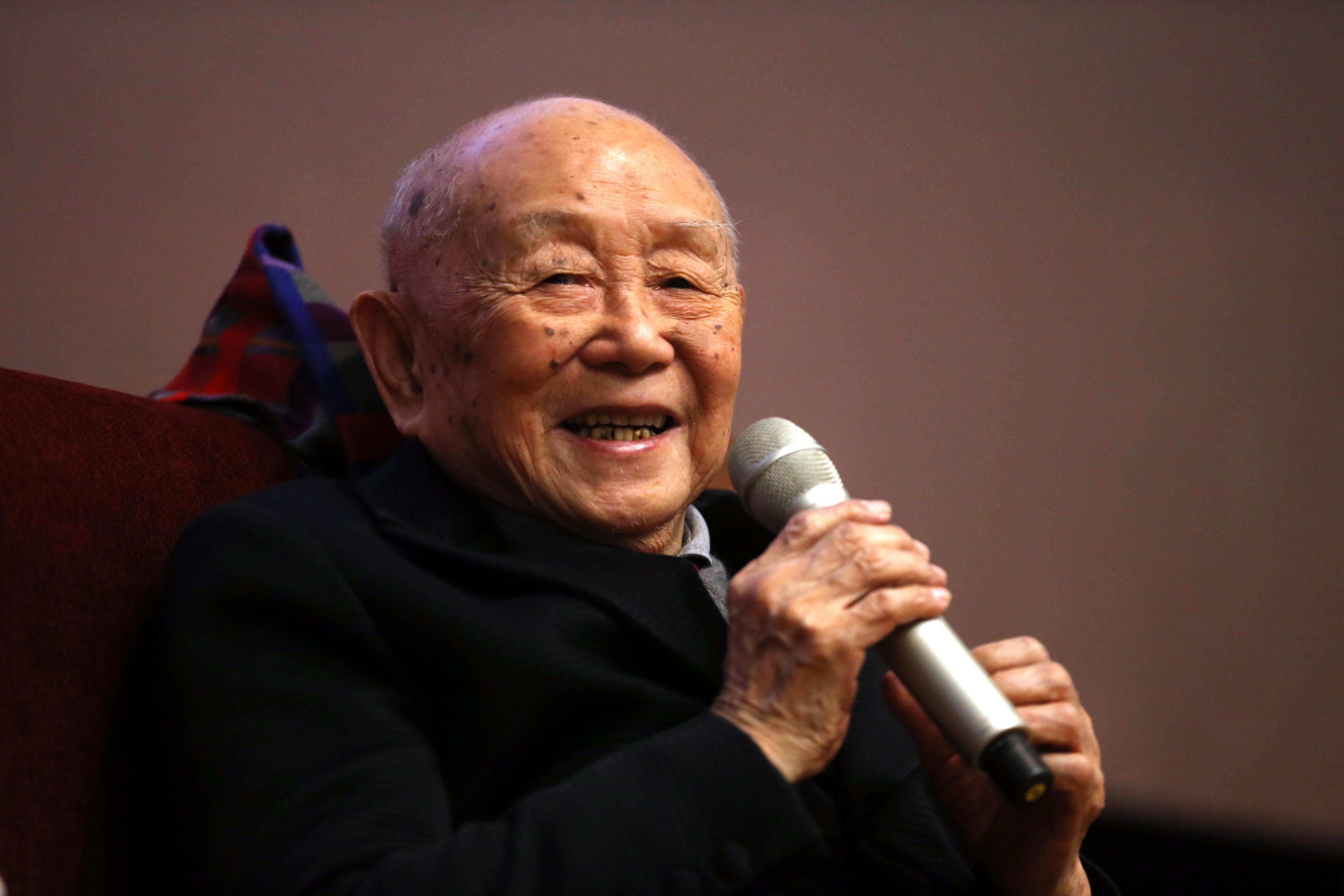 Huang Yongyu at his exhibition at the National Museum of China in Beijing in 2017. (JIANG DONG / CHINA DAILY)
Huang Yongyu at his exhibition at the National Museum of China in Beijing in 2017. (JIANG DONG / CHINA DAILY)
In a television interview in July, Huang Yongyu, the celebrated artist and writer, then in his 90s, said: "Death is not at all a dreadful thing that I would fear. And I don't feel like leaving anything (for people to remember), such as ashes, or (a shrine) to be paid for by devotion at the ancestral hall; there is no need for that."
Huang wrote a poem more than four decades ago, titled If I Could Live to 100 Years Old, in which he also mentioned about the end of life: "The day would come, and as if I were to embark upon a journey, I would bring a tiny small luggage, and put into my chest pocket a rose yet not open; like a veteran sailor to sail far away, (I) would not disturb others, and quietly, I close the door of where I've lived for long."
Be serious of the thing you want to do, and let your interest guide you and read all the interesting books in the world. If you miss me, well, take a look at the sky, and the clouds.
Huang Yongyu, artist
Huang, whose artistic output is well-received among the public, bid a farewell to the world in the quiet, distant manner he had envisaged. A family statement released on Wednesday announced his passing away a day earlier, at the age of 99; it also said no memorial services will be held, at his will. "I wish that my ashes will be returned to nature as fertilizer," said his last signed will in September 2021.
News outlets and social networking platforms have been flooded with reports and postings mourning his death, in evidence of the man's enormous popularity transcending time and space, age and social background.
Hailing from Changde, Hunan province, Huang lived with a striving, unyielding spirit that transformed him, a country boy with a humble background, into a legendary figure in art and literature in the second half of the 20th-century China. His oeuvre, encompassing paintings, woodcuts, literary compositions and designs, embodies humor, acumen and a magnanimous attitude, which made him a subject of respect and empathy among audiences.
 My Country, My People, at the capital's National Art Museum of China. (PHOTO PROVIDED TO CHINA DAILY)
My Country, My People, at the capital's National Art Museum of China. (PHOTO PROVIDED TO CHINA DAILY)
Huang, a self-taught artist and former professor of the Central Academy of Fine Arts, witnessed the progress of Chinese art throughout the 20th century, and he himself took an active part in the course. He worked with, and befriended, influential personas in the circles of arts and culture. And the accomplishments came from his perseverance in self-learning and hard work.
Born to a family in destitution, Huang finished primary school and in his early teens, he left his hometown to seek a better living.
He wondered from place to place to take on different jobs to support himself: apprentice at ceramics factories, schoolteacher, prop designer at theater troupes and magazine illustrator.
Meanwhile, his interest in reading and painting formed in childhood developed into a will to establish a career as an artist and writer. Coping with life hardships and social instability, he honed skills in art and especially, achieved some fame as a woodcut artist.
"During wartime, when I heard guns and bombs, I immediately grabbed a backpack and ran for my life," Huang once recalled. "I carried these things around, as I moved from one place to another during the War of Resistance against Japanese Aggression (1931-45) and throughout the decades afterward. I have never parted with them. They are like my bones, documenting part of my history."
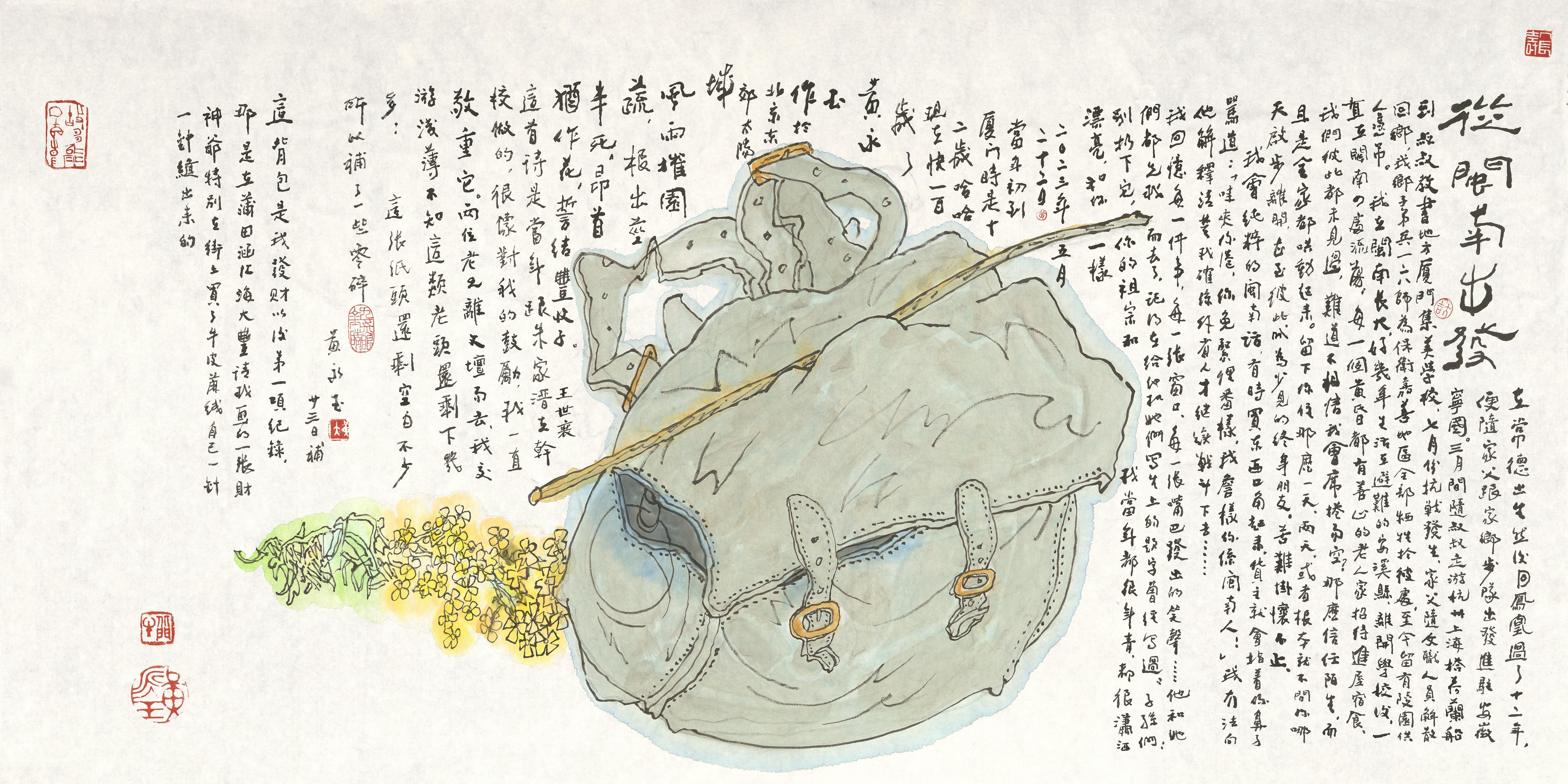 Traveling Afar, part of the Powerlong Museum's collection in Shanghai. (PHOTO PROVIDED TO CHINA DAILY)
Traveling Afar, part of the Powerlong Museum's collection in Shanghai. (PHOTO PROVIDED TO CHINA DAILY)
One of his best known woodcuts, Ashima, which was inspired by an ethnic folktale during a trip in Yunnan province in 1954, is now on show at the National Art Museum of China in Beijing.
Among those cultural luminaries who acknowledged Huang's talent, regardless of his background, was Xu Beihong, then the dean of CAFA, who landed Huang, then in Hong Kong, a teaching position at the academy's department of print art in the early 1950s. He taught there for decades, and later leveraged his endeavor in creation and education to be a vice-chairman of China Artists Association.
Settling in Beijing opened a new chapter in Huang's life. He marched into other territories of art: learning Chinese painting and oil painting. And he published essays to share his rich experiences and anecdotes of friends — mostly cultural figures — and his poems were often illustrated with his own drawings.
Huang's works have touched the softest spot in people's hearts primarily not on the technical side, but because of the vigor of life to erupt from the subjects he depicted, childlike innocence and honesty, and a witty perspective.
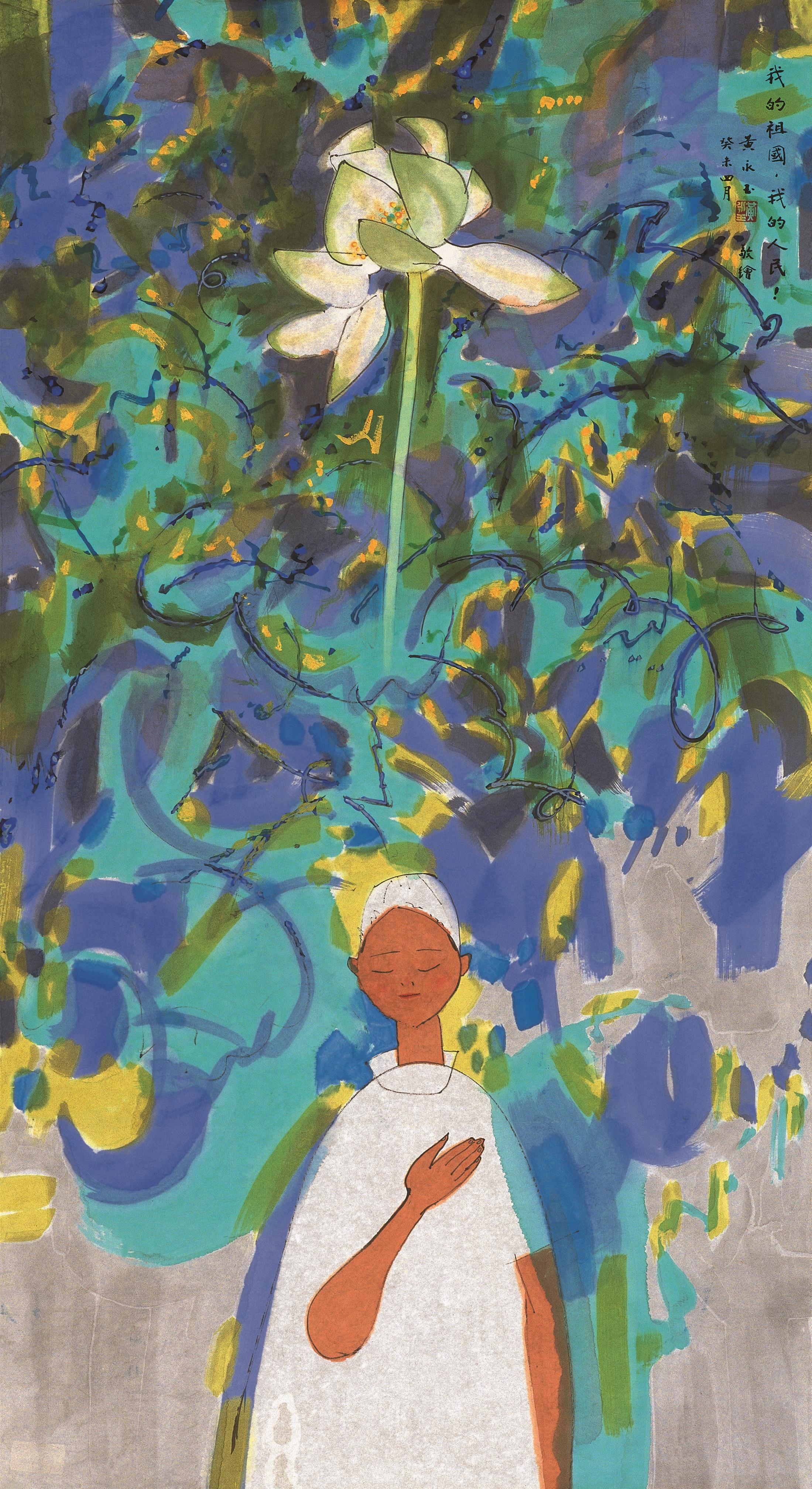 Huang's last painting, Starting From Minnan, made earlier this year. (PHOTO COURTESY OF BEIJING FINE ART ACADEMY)
Huang's last painting, Starting From Minnan, made earlier this year. (PHOTO COURTESY OF BEIJING FINE ART ACADEMY)
He revisited animals in his work to express his life philosophy. For example, he once drew a mouse and wrote on the painting: "I look ugly, (but) my mom likes me anyway."
While it was his design of the Golden Monkey stamp, issued in 1980 as the first of the rotation of zodiac stamps by China Post, that truly made him a household name. This Year of the Monkey stamp created by Huang has become a sought-after collectible on the art market.
Huang designed a set of two Year of the Rabbit stamps for this year, while one of them — featuring a laughing, blue rabbit done in a comic style — drew divided responses, as some said it didn't look eye-pleasing at all.
Huang was open-minded to the critical feedback, saying he was to make people happy only. He once said: "The mission of an artist is to continuously discover things that people don't notice, and show them to the audience, who will be surprised and say, 'how could I not notice that?' That is pretty much what art is for."
Huang enjoyed the feeling of indulging himself in the world of art and writing as much as creating an enriched lifestyle. He is a known collector of vintage and luxury cars. He built a "ten thousand lotuses garden" at his spacious villa in suburban Beijing. He loved lotus flowers so much that he made dozens of paintings of the plant, many of several meters in length and height. He kept an army of dogs and several cats at home.
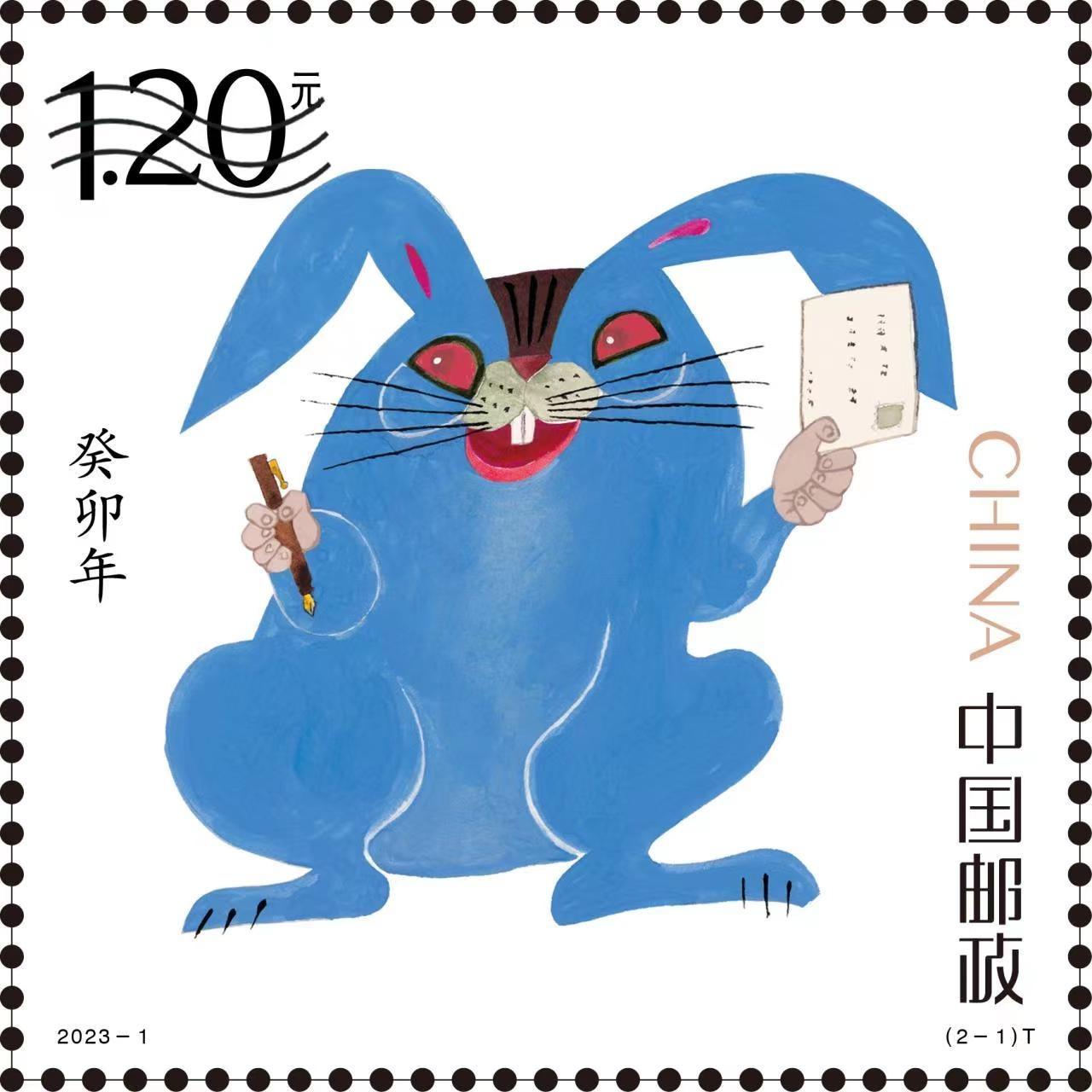 Huang's stamp marking the Year of the Rabbit this year and his design of a stamp celebrating the Year of the Monkey, issued in 2016. (PHOTO PROVIDED TO CHINA DAILY)
Huang's stamp marking the Year of the Rabbit this year and his design of a stamp celebrating the Year of the Monkey, issued in 2016. (PHOTO PROVIDED TO CHINA DAILY)
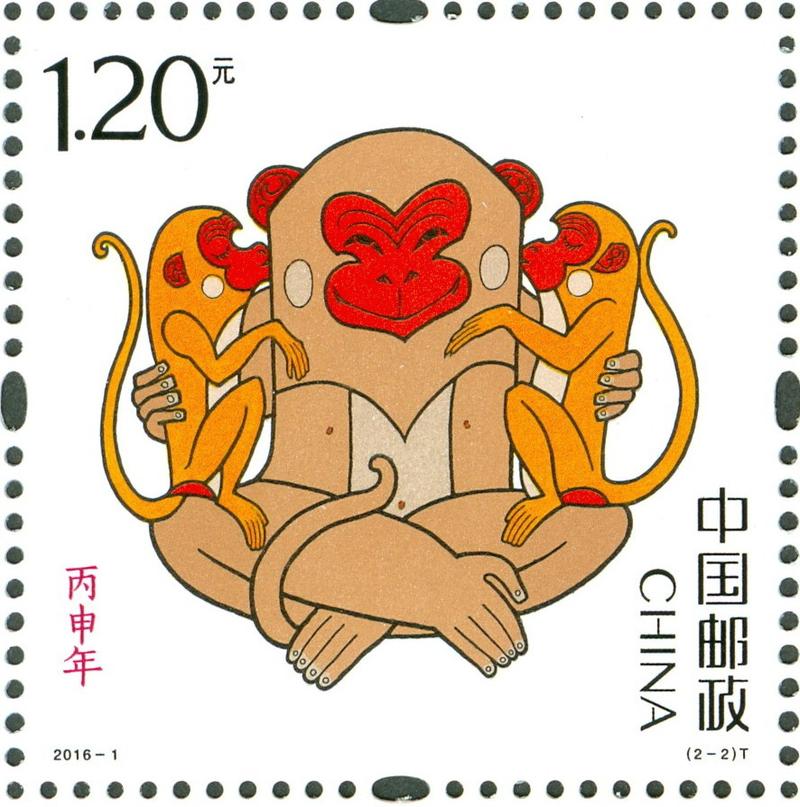 Huang's stamp marking the Year of the Rabbit this year and his design of a stamp celebrating the Year of the Monkey, issued in 2016. (PHOTO PROVIDED TO CHINA DAILY)
Huang's stamp marking the Year of the Rabbit this year and his design of a stamp celebrating the Year of the Monkey, issued in 2016. (PHOTO PROVIDED TO CHINA DAILY)
The 75-year-long marriage between Huang and his beloved wife Zhang Meixi, who died in 2020 at the age of 98, has been talked about by people with great relish. Zhang came from a well-connected family, and tied the knot with Huang against her family's wishes. The couple collaborated in work: Huang made illustrations for the work of Zhang, a children's literature writer.
His last works included a solo show of poems and illustrations at the National Museum of Modern Chinese Literature in Beijing, in April last year, and an ink painting done earlier this year, titled Starting from Minnan, which shows a big used backpack, surrounded by his recollections of early years spent in southern Fujian province after leaving his hometown in Hunan. The painting was made especially for his woodcuts exhibition, which opened at a museum in Xiamen, Fujian, on June 10.
Huang once said: "Be serious of the thing you want to do, and let your interest guide you and read all the interesting books in the world.
"If you miss me, well, take a look at the sky, and the clouds."
Contact the writer at linqi@chinadaily.com.cn



